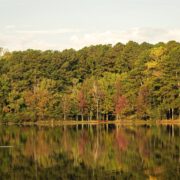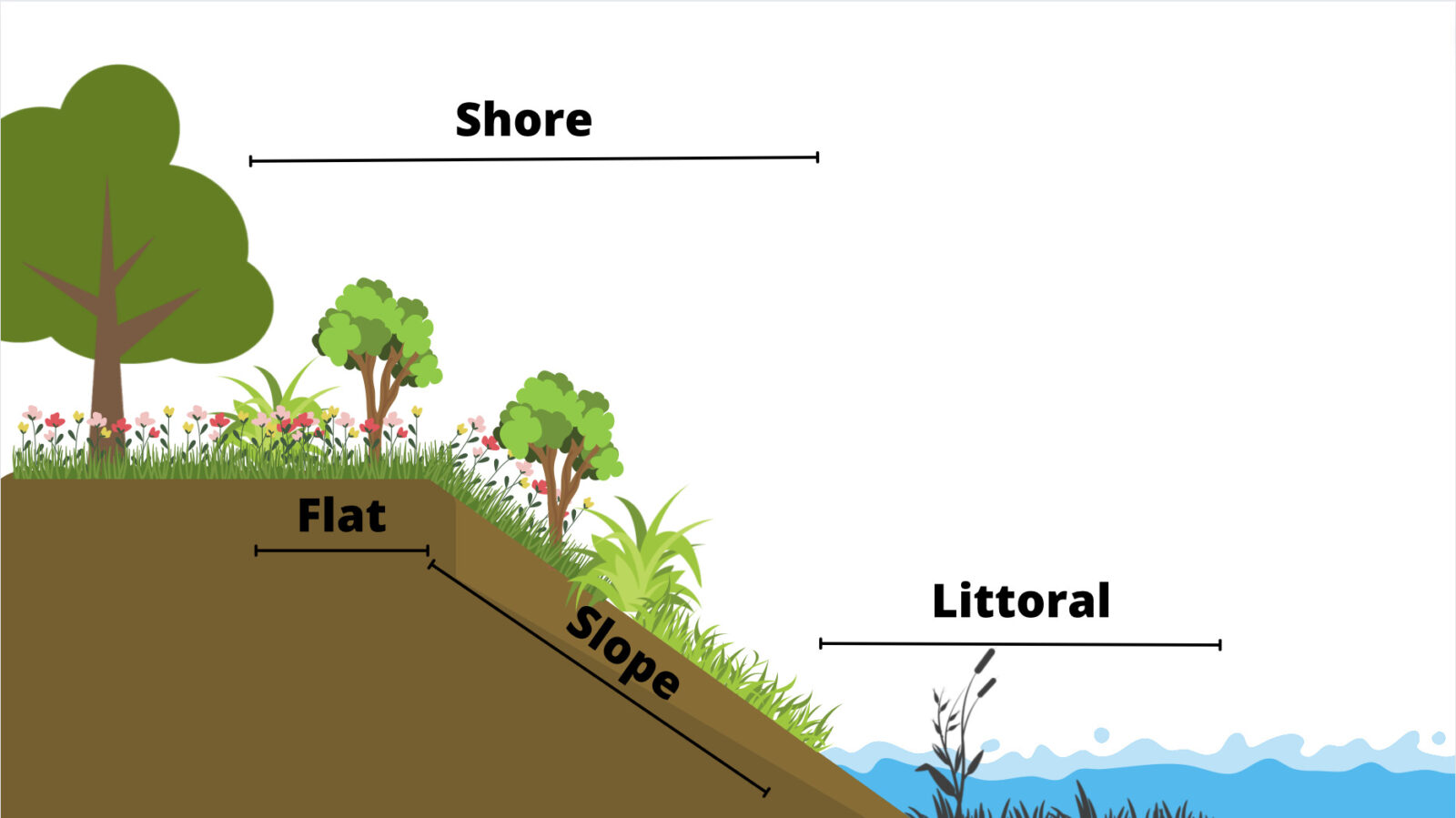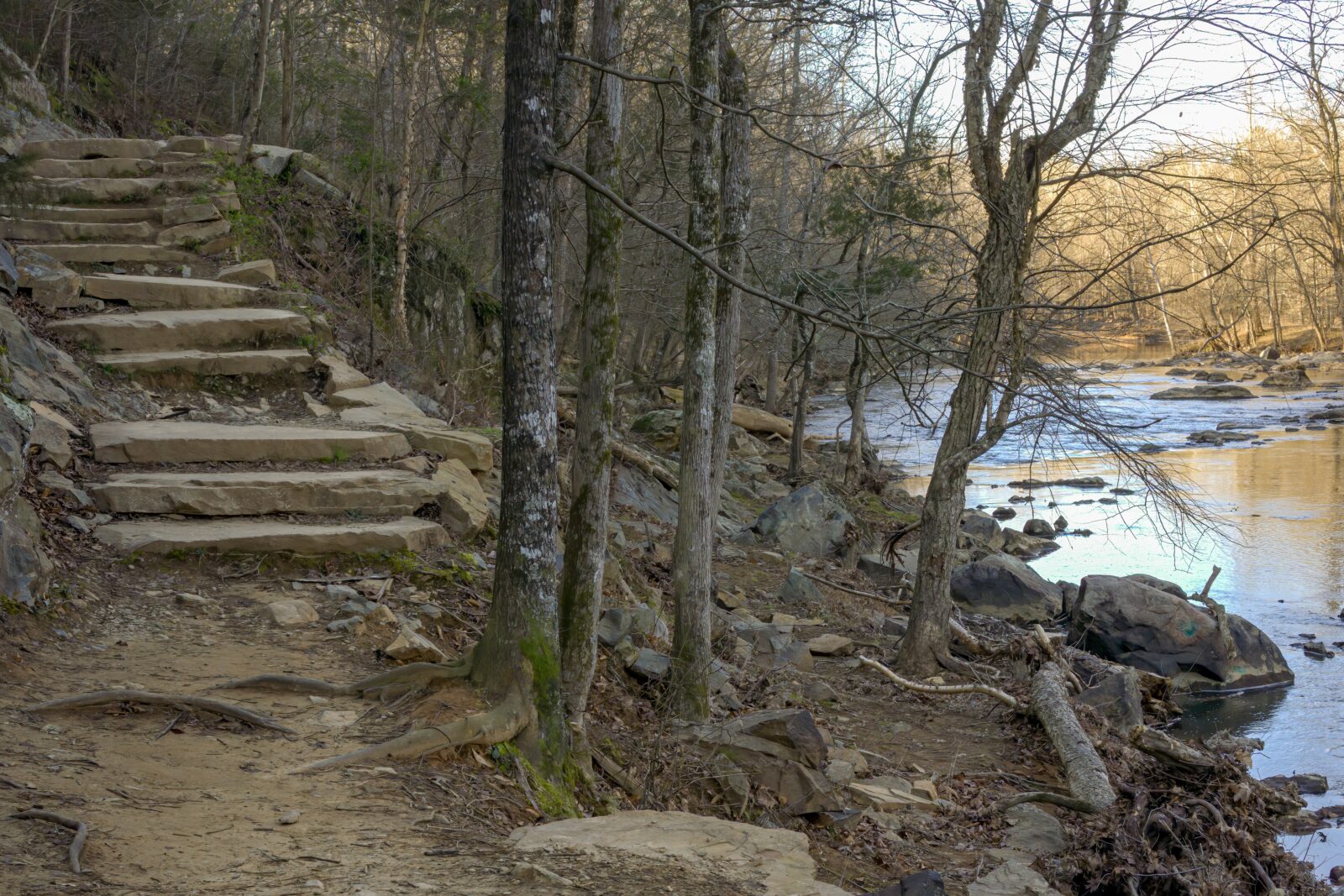PROTECTING OUR WATERWAYS WITH RIPARIAN BUFFER STRIPS
The shoreline is the area bordering a lake or waterway, beginning at the limit of the littoral zone. It’s a territory that begins when the ground rises above the water (high-water mark) and ends inland. The shoreline often comprises a slope and a flat area, both of which are inhabited by suitable vegetation.
It is an important element in the health of the aquatic environment, since it is a transitional environment (ecotone) between the terrestrial and aquatic environment.
Riparian buffer functions
A high-quality, vegetated riparian buffer fulfills a number of ecosystemic functions. The vegetation consists of herbaceous plants, shrubs and trees. It should measure at least 10 m to 15 m, depending on the slope, but a wider space would be ideal [1]. This riparian buffer strip helps stabilize riverbanks through the plants’ root systems, thus reducing erosion. It improves water quality by retaining sediments that run off into the water and also filters contaminants such as fertilizers and pesticides. [1][2]
The perimeter of a landscaped watercourse or lake becomes an ecosystem that fosters biodiversity both in the water environment and in the terrestrial environment beyond the shoreline. Animals use it to feed, hide and reproduce… The result is a visually pleasing environment that is also a refuge for wildlife. Moreover, the presence of vegetation layers creates shade, which reduces evapotranspiration and water temperature. [1][2][3]
Where to install a riparian buffer strip?
The need to install riparian buffers to protect our aquatic ecosystems is a current topic. For example, riparian buffers are installed around agricultural fields to limit nutrient runoff. This practice is also useful in other situations. Riparian buffers are appropriate for lakes surrounded by cottages or on roadsides. They are also useful for protecting watercourses around businesses with effluent discharges. In fact, wherever there’s a watercourse or lake, a healthy, vegetated shoreline is a must.
Keep your eyes peeled, whether you’re walking, cycling, taking the bus or driving; many natural water bodies and watercourses have a deficient riparian buffer strip, or even no riparian buffer at all. That’s why T2 Environnement, along with a number of other organizations, is helping to restore them and turn the tide!
[1] Fédération interdisciplinaire de l’horticulture ornementale du Québec. (2013). Guide de bonnes pratiques – Aménagement et techniques de restauration des bandes riveraines. [Online]. https://banderiveraine.org/wp-content/uploads/2013/07/FIHOQ_guide_2013_web_spread.pdf
[2] Union des producteurs agricoles (en partenariat avec Faune Québec). (n.d.). À quoi sert la bande riveraine. [Online].
https://www.bandesriveraines.quebec/a-quoi-sert-la-bande-riveraine/
[3] Organisme de bassin versant Lac Saint-Jean. (n.d.). Bandes riveraines. [Online].
https://www.obvlacstjean.org/informations-et-outils/bandes-riveraines-agriculture/





